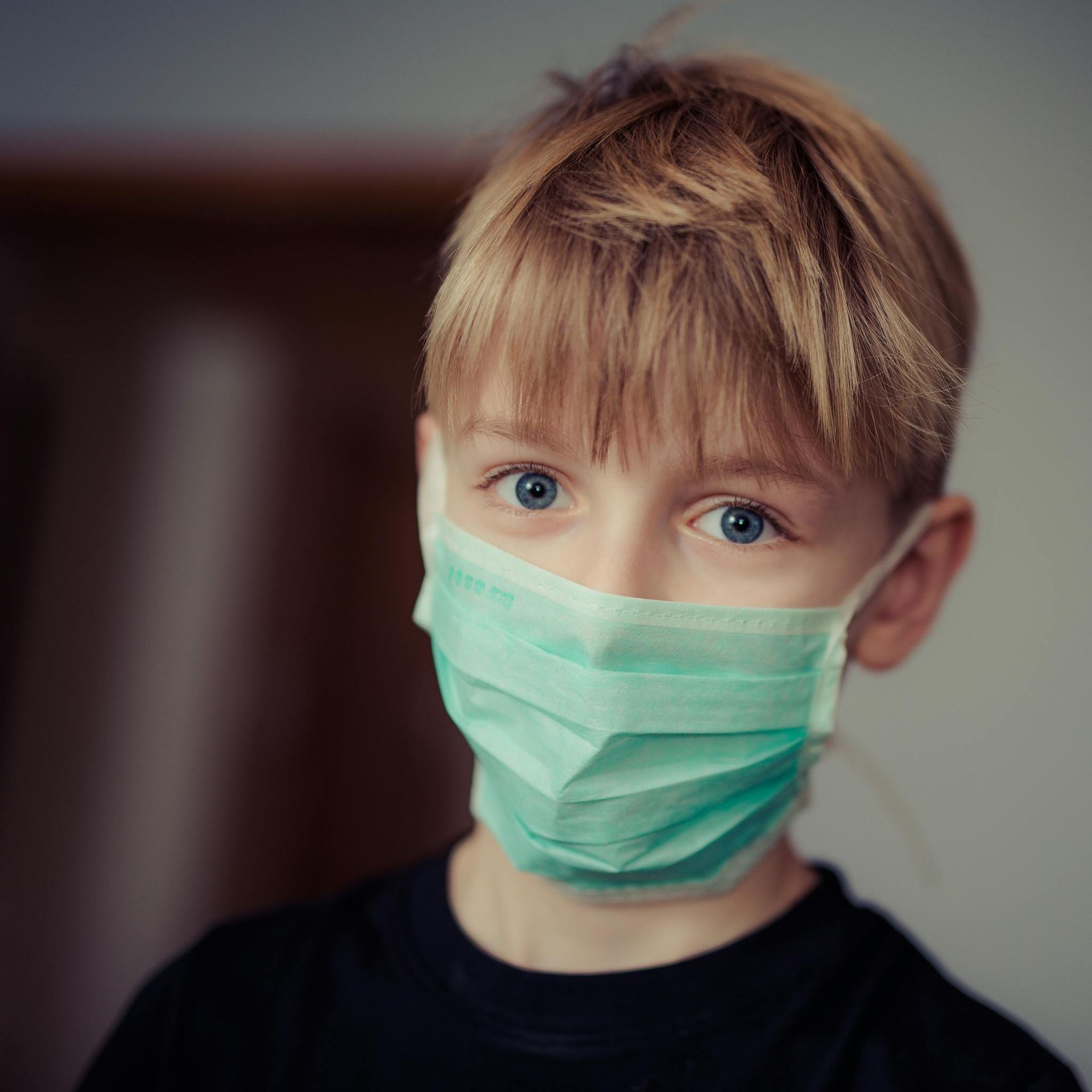COVID-19
COVID-19, a disease caused by the coronavirus SARS-CoV-2, emerged as a significant global health concern toward the end of 2019. The virus was first identified in Wuhan, China, in December 2019, and rapidly spread across the globe, leading the World Health Organization (WHO) to declare it a pandemic on March 11, 2020. The virus primarily spreads through respiratory droplets when an infected person coughs, sneezes, or talks. While COVID-19 affects all age groups, much of the early concern focused on older adults and people with underlying health conditions, who were observed to experience severe outcomes more frequently.
In children and young people aged birth to 21 years, COVID-19 symptoms can vary greatly. Fortunately, most children experience only mild symptoms similar to a common cold, such as runny nose, sore throat, mild cough, and low-grade fever. For the vast majority of children, COVID-19 is treated like the common cold.
However, rare cases of COVID-19 can involve more severe complications, including Multi-System Inflammatory Syndrome in Children (MIS-C).
Multi-System Inflammatory Syndrome in Children
Multi-System Inflammatory Syndrome in Children (MIS-C) is a serious inflammatory condition linked to COVID-19 infection, characterized by widespread inflammation affecting multiple organs, such as the heart, lungs, kidneys, brain, skin, eyes, and/or gastrointestinal organs. Treatment involves hospitalizing the child for close monitoring, often in a pediatric intensive care unit, and administering anti-inflammatory medications like intravenous immunoglobulin (IVIG), corticosteroids and rarely biologics to control the inflammation. Anticoagulants may be used to prevent complications related to blood clots, and supportive care is provided to address symptoms such as breathing difficulties and blood pressure instability. Cardiac monitoring is done, as the heart can be significantly affected. With prompt and appropriate medical care, most children recover, but ongoing follow-up is important to ensure full recovery and to manage any long-term effects.
Since the start of the pandemic, the virus has evolved, resulting in different variants. Some variants spread more rapidly and have presented challenges in controlling the virus. Gone are the days of the more severe Delta variant of the summer of 2021 when many children in Arkansas were hospitalized and some even died. Despite decreasing severe cases, some individuals still develop long COVID, a condition where symptoms persist for weeks or months after the initial infection has cleared. Long COVID can affect various systems in the body, leading to fatigue, difficulty concentrating, or respiratory issues. Understanding and treating long COVID is an ongoing research priority.
Early and effective treatment options for COVID-19 have also improved. Antiviral medications like Paxlovid and monoclonal antibody treatments minimized disease progression. Public health strategies, including mask-wearing, hand hygiene, and social distancing played a role in mitigating the spread of the virus.
The outlook for young people with COVID-19 is generally positive due to better treatment options, improving population immunity achieved through infection with the virus and the past use of vaccines.
COVID-19 Vaccination
Vaccination has been an important tool in managing COVID-19. The rapid development of vaccines was a major achievement in the global pandemic response. The Pfizer-BioNTech and Moderna vaccines, which use mRNA technology, were among the first to receive emergency use authorization in late 2020. These vaccines have been shown to be highly effective in preventing severe illness, hospitalization and death in adults. As vaccine trials included younger populations, recommendations expanded to include children and adolescents under emergency use authorization. Please see COVID-19 vaccination section.
The development of these vaccines significantly altered the landscape of the pandemic. Population immunity, developed by both vaccination and actual infections, led to reduced morbidity and mortality rates. Many children with COVID-19 now experience mild symptoms or remain asymptomatic, often resembling common respiratory infections.
This year (2025) new leadership at the CDC has de-emphasized COVID-19 vaccination for children. The American College of Immunization Practice (ACIP) has been reformed and this new committee has not recommended universal COVID-19 vaccines. In fact, we have not been able to even order the vaccine. Some pharmacies may have children's doses of the COVID-19 vaccine.


